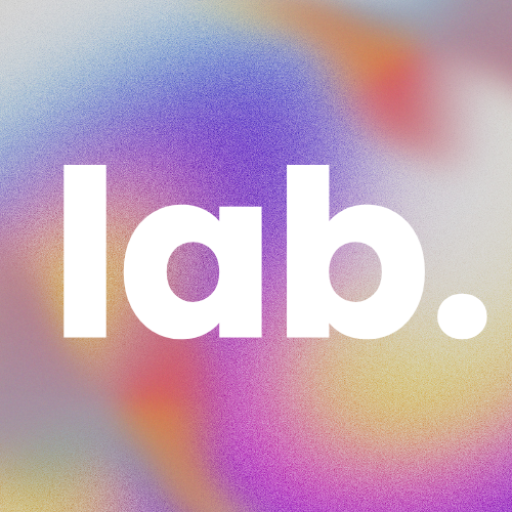SAFRAN PASSENGER INNOVATIONS
Safran Passenger Innovations provides a seamless and exciting user experience for a multitude of airlines through their RAVE OS product. As the sole UX/UI Designer, I helped develop this product by creating an interactive meal menu.
My Role
UX / UI Design
User Research
Prototyping
Tools
Adobe XD
User Testing
Python
Timeline
6 months
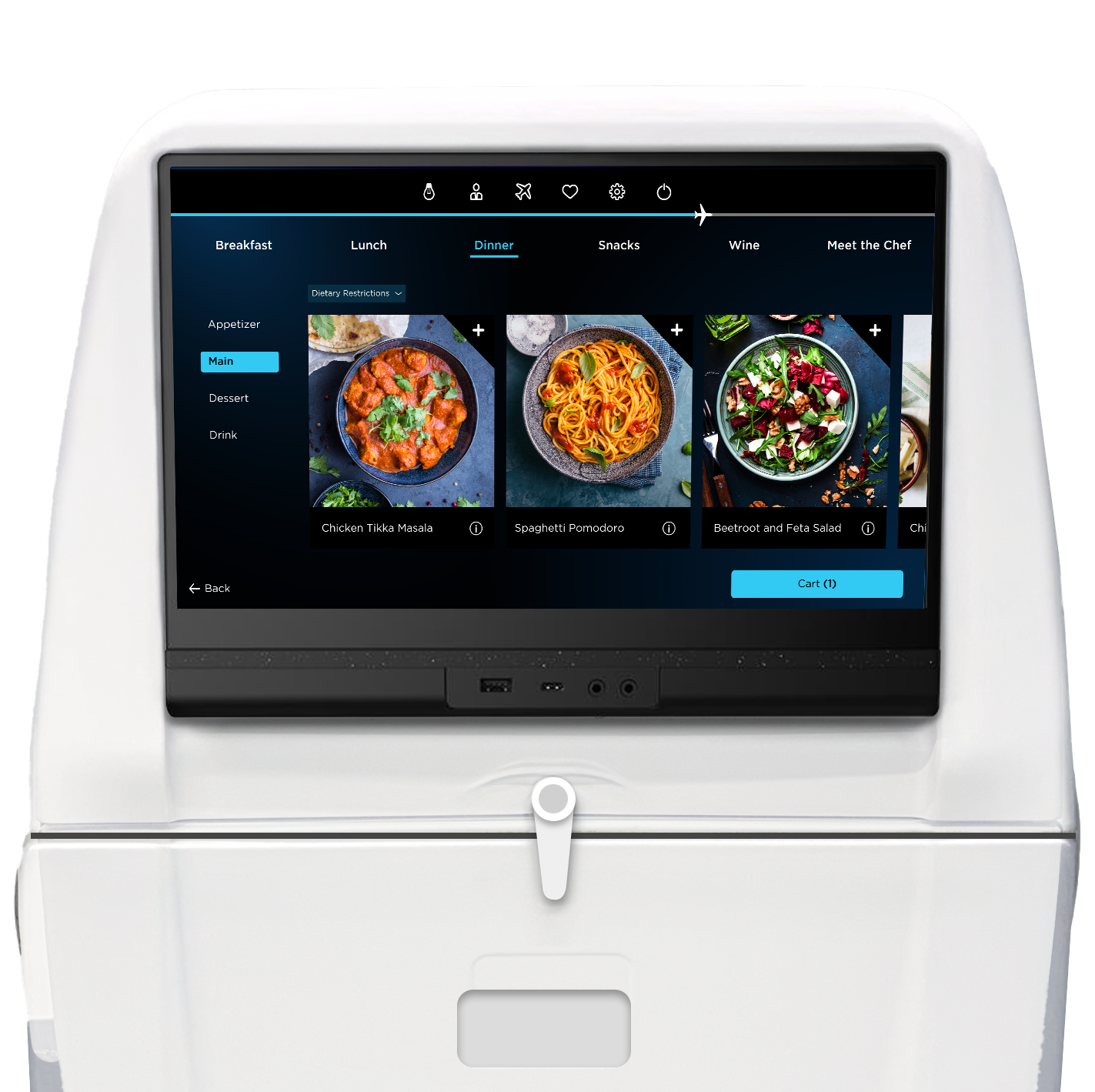
Background
Airlines most commonly offer meals through flight attendants serving pre-determined or limited options, often with minimal opportunity for upselling or customization. This approach can be inefficient, leading to potential dissatisfaction and missed revenue opportunities. An interactive meal menu within the in-flight entertainment system allows for greater customization, pre-ordering, and upselling, improving both passenger experience and airline profitability.
Hypothesis
An interactive meal menu on inflight entertainment systems will enhance the passenger experience by allowing for more informed and personalized meal choices, leading to greater satisfaction and reduced service errors.
Preliminary Research
In order to identify passenger expectations, preferences, and pain points, I conducted preliminary surveys, interviews, and focus groups amongst Safran employees who were familiar with our in-flight entertainment system.
What factors influence your meal choice?
Are there any frustrations or challenges you face when using an online ordering system?



The simplicity and convenience of the meal selection process significantly impacts the user experience
Nutritional information should be highlighted in the meal menu to cater to health-conscious travelers and those with dietary preferences
Visual design matters – the design should include high-quality images, clear text, and an intuitive layout
User Flow

Design Overview
Meal Menu Wizard
One of the main requests received during our preliminary research was the desire for simplicity. I decided that this could be achieved through a ‘Meal Menu Wizard’. In particular, this simple step-by-step meal selection would occur during the start sequence of the in-flight entertainment system. This way, passengers and crew will be aware of the options, and even order straight away, from the beginning of the flight.
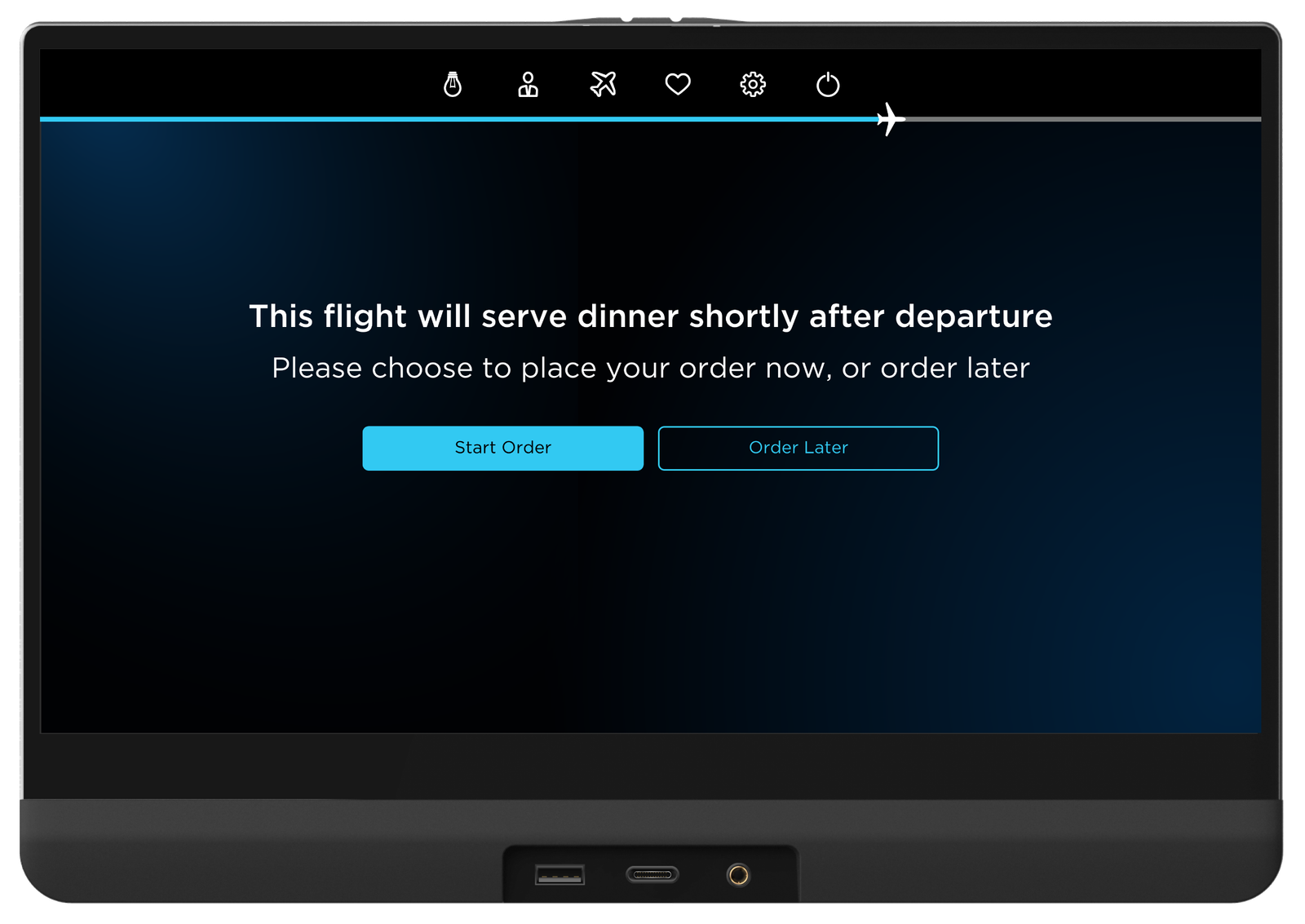

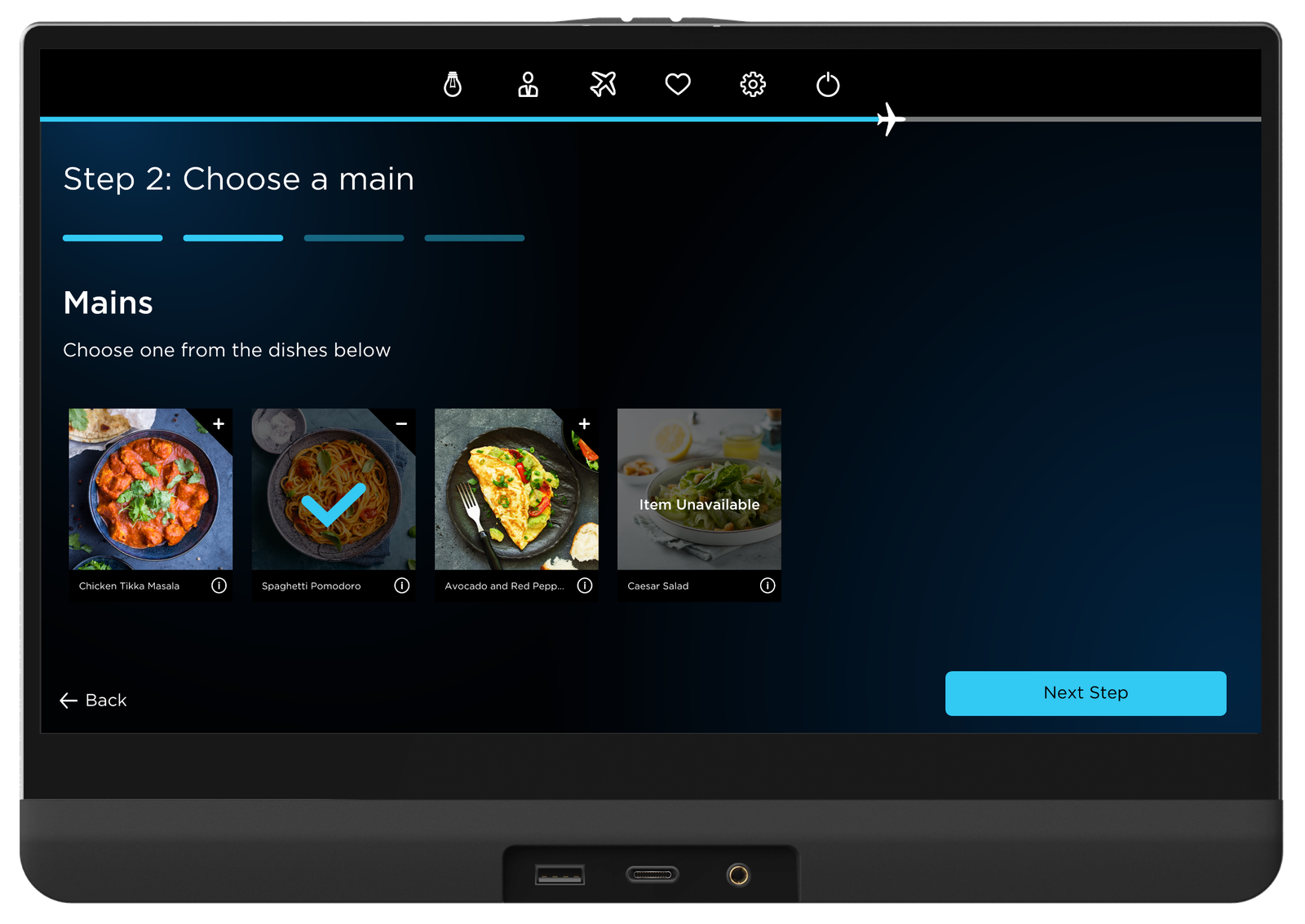
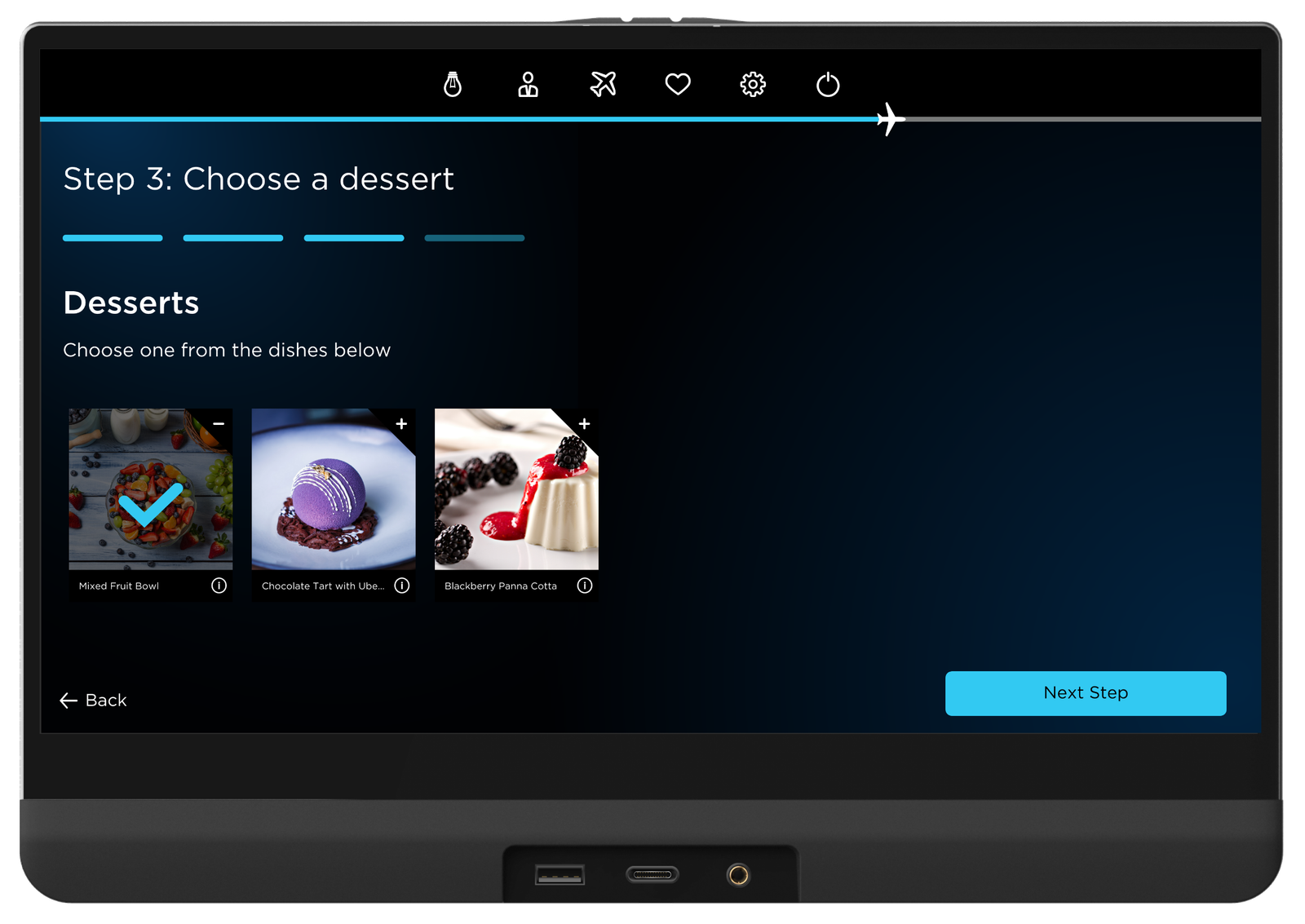
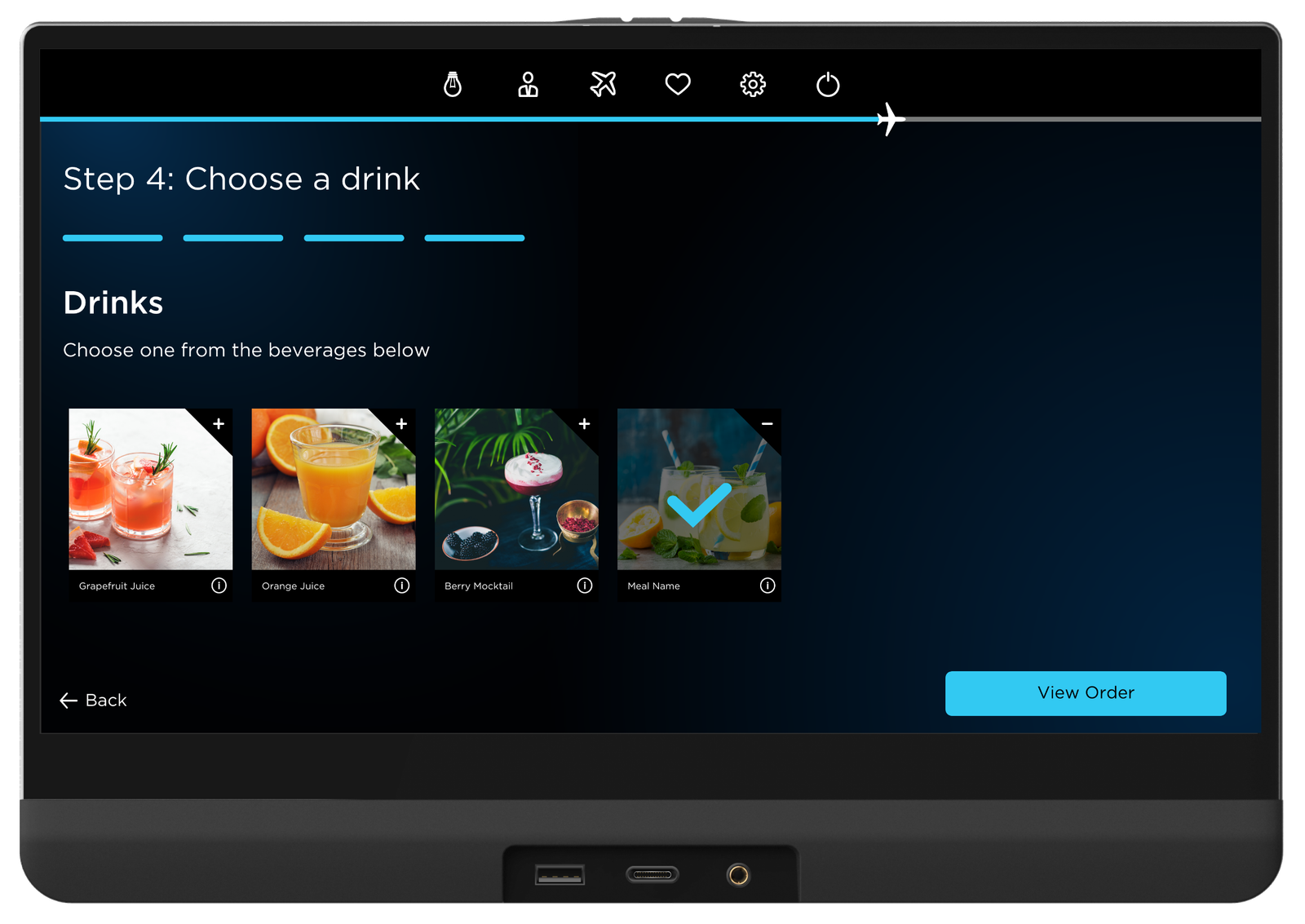
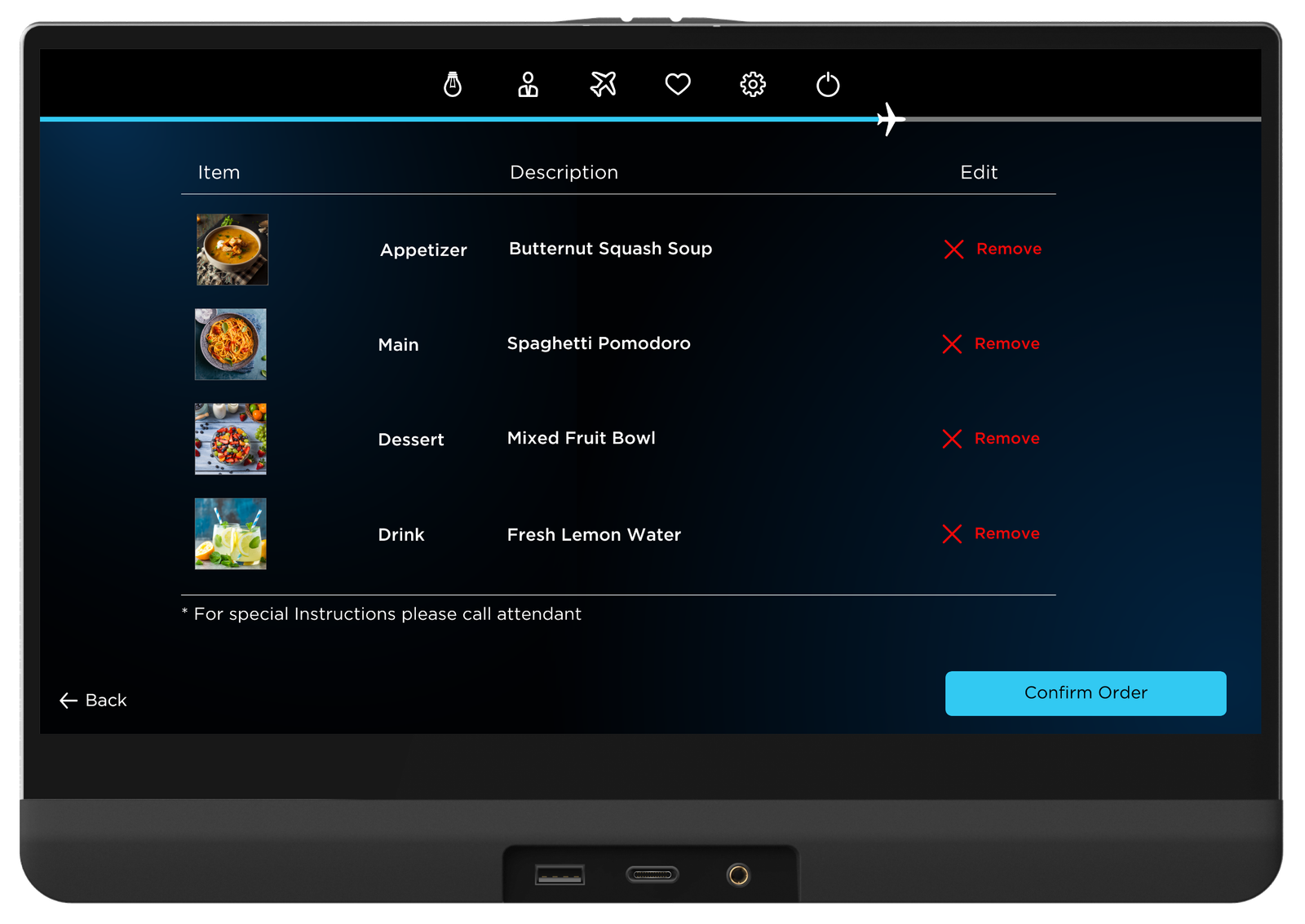
General Meal Menu
While the Meal Menu Wizard is an essential element to enhance the user experience of passengers, it is crucial to design for passengers that chose to order later in the flight. Although the general UX/UI is very similar, the meal menu widget within the in-flight entertainment system offers a more detailed and thorough experience.
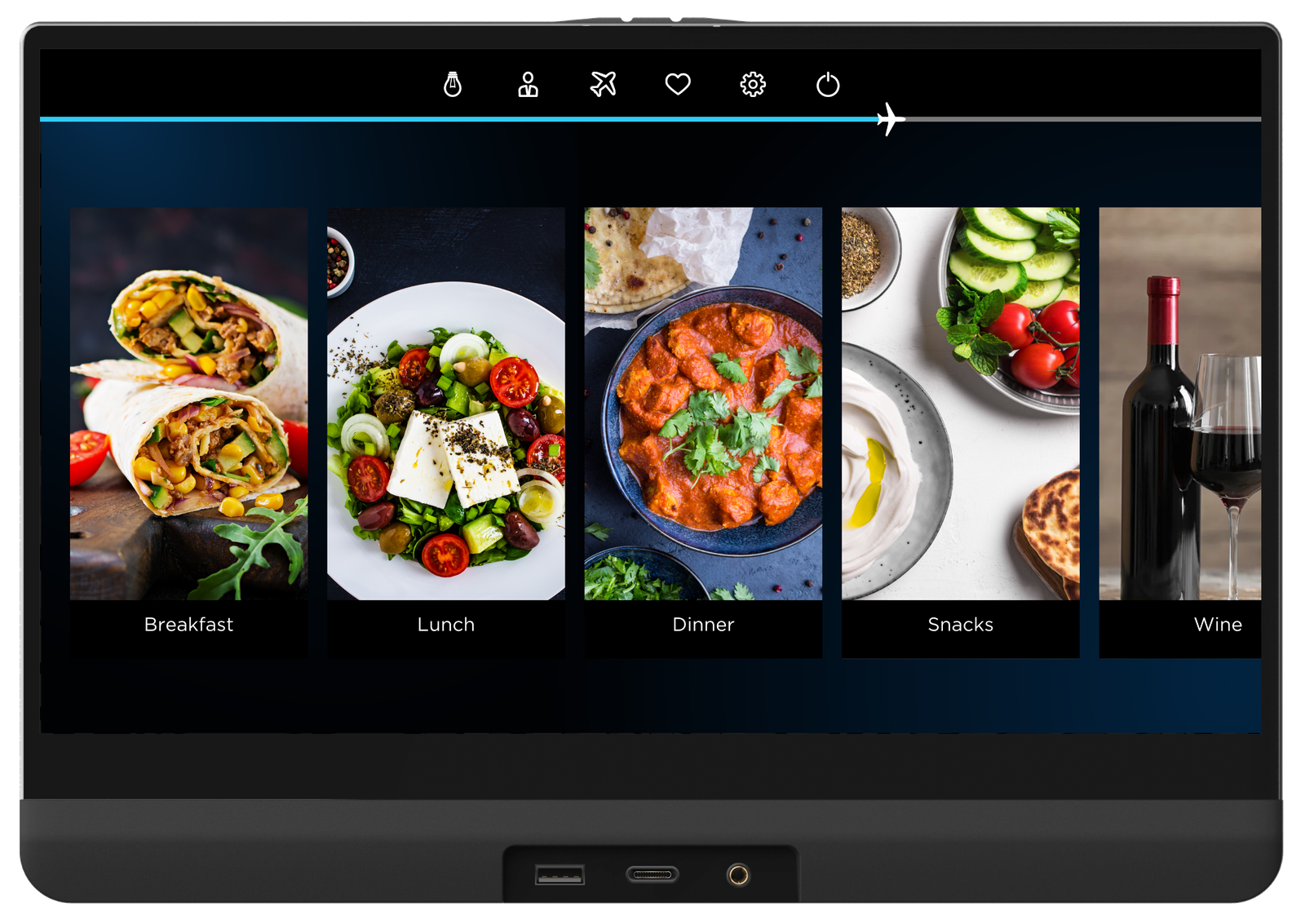
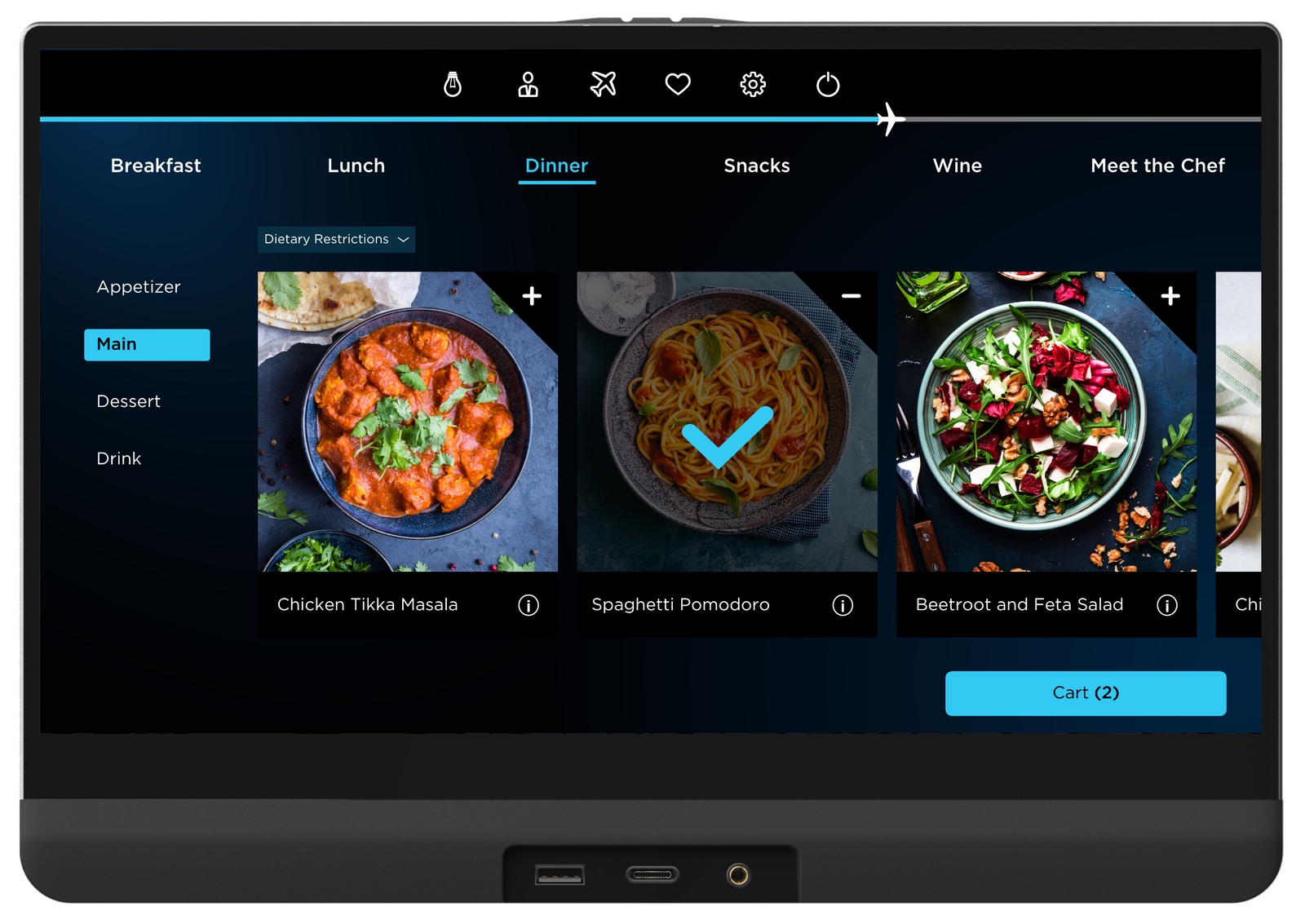
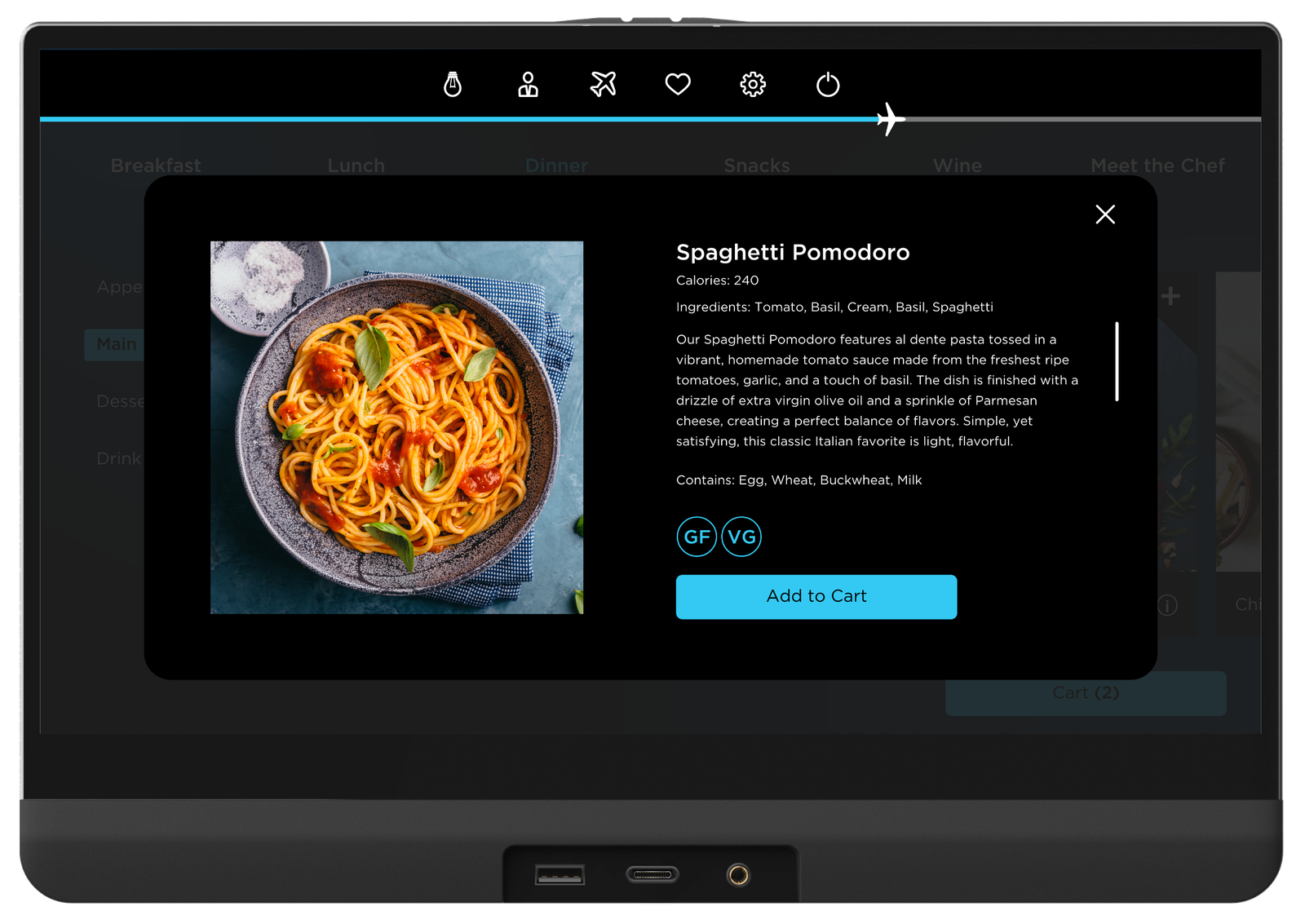
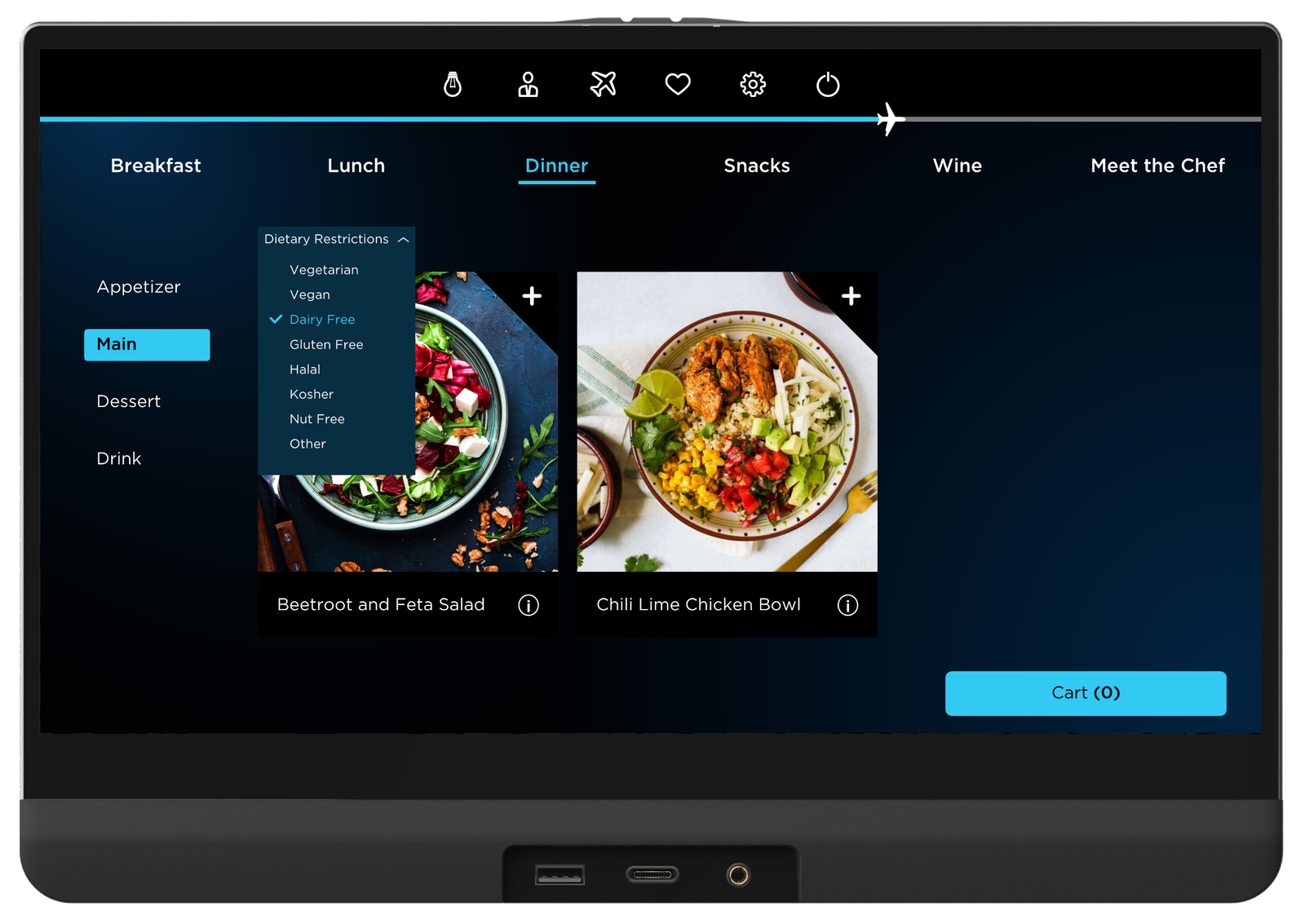
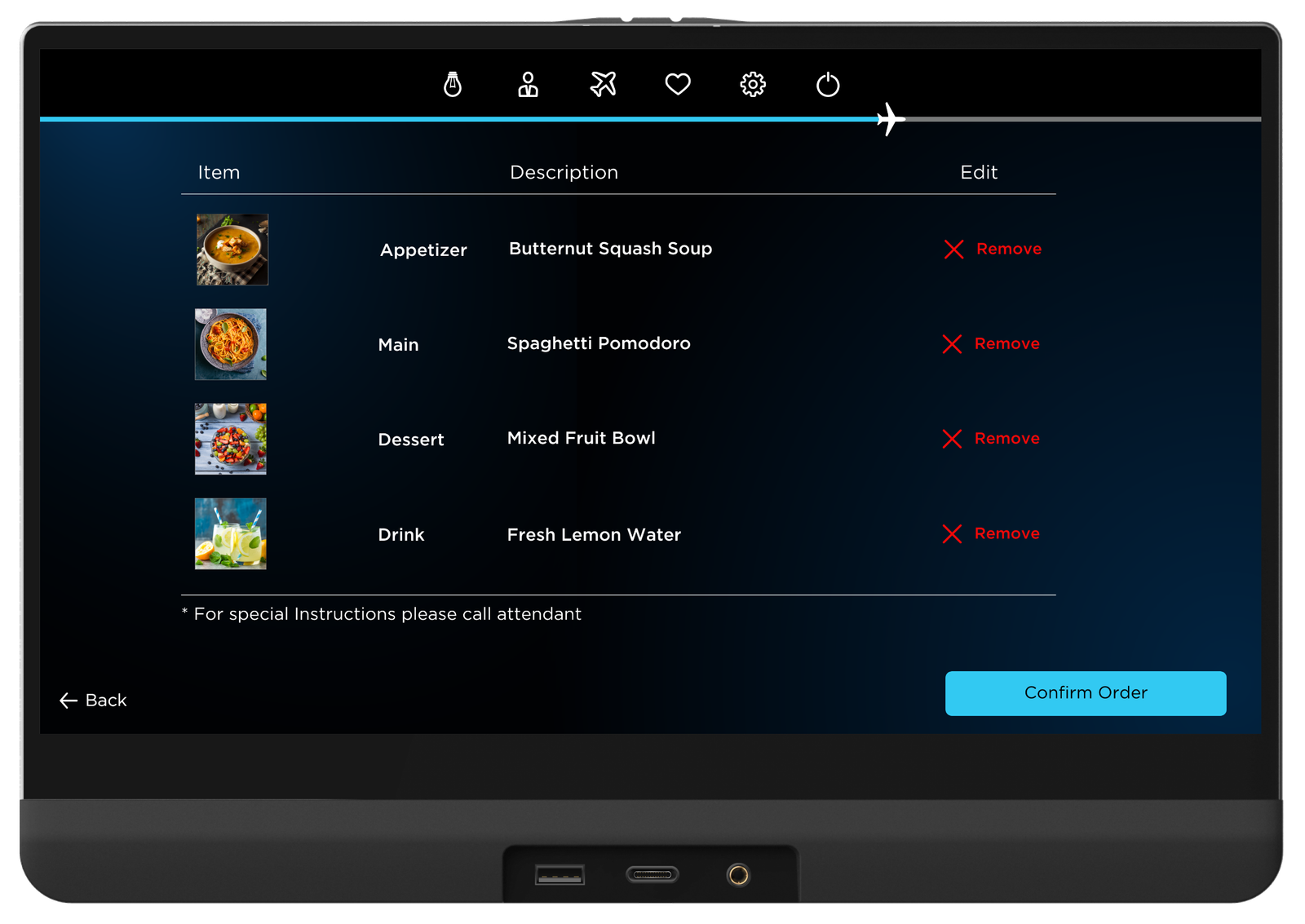
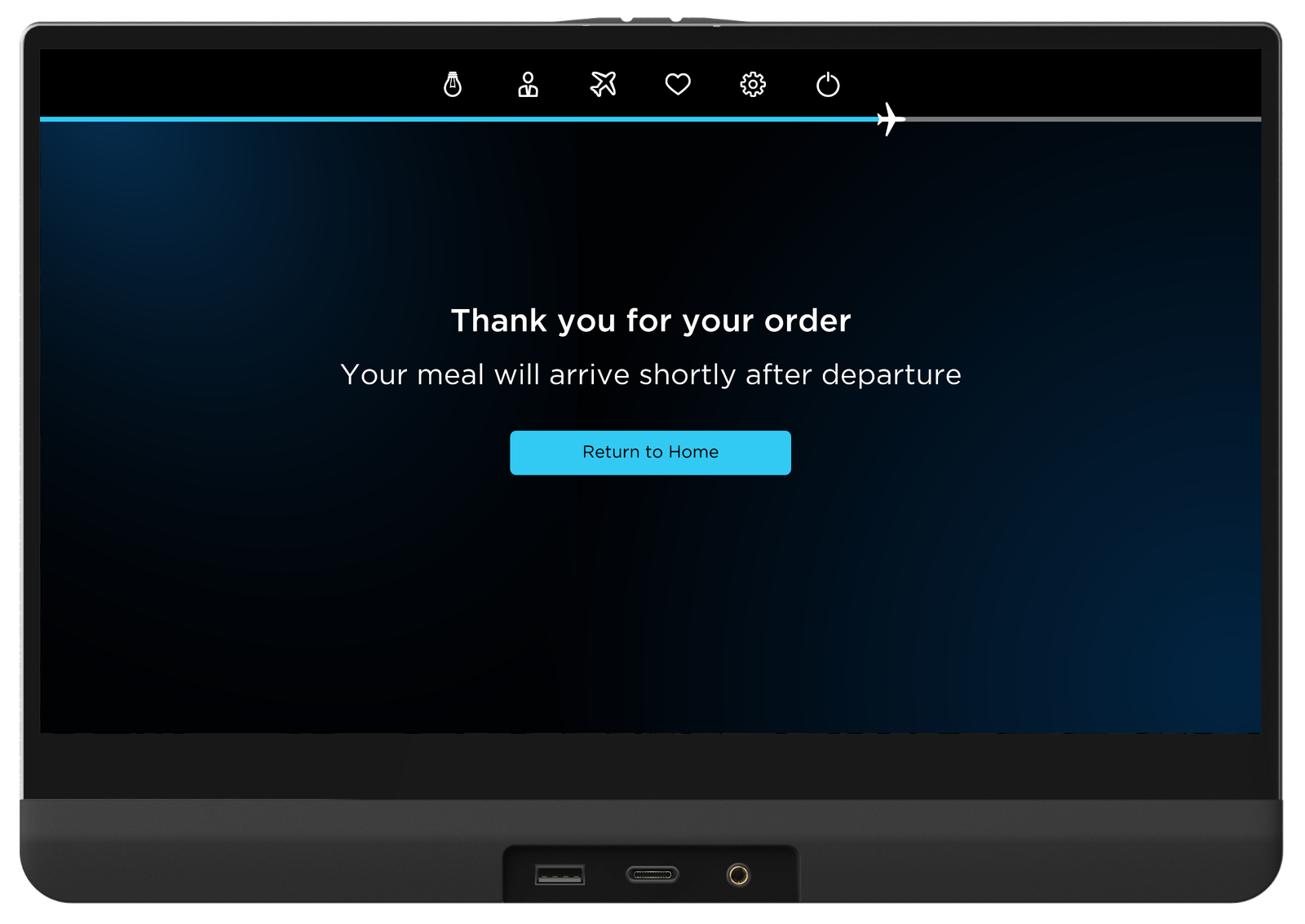
User Research
Once the design of this feature had been finalized, we used UserTesting to uncover any potential issues. Specifically, we recruited 10 users to participate in this research.
As the preliminary research highlighted the importance of nutritional information and dietary preferences, the goal of this research was to discover whether this design was accessible for those with dietary requirements. Participants were asked to imagine that they were a vegetarian on a flight ordering a meal. They were asked to perform three tasks:
1. Filter through vegetarian options
2. Access nutritional information
3. Place an order
Following completion, participants were asked questions about their experience using the interactive meal menu, and whether they have any thoughts on how to improve this experience.
I assigned each passenger a color, noted important quotes, and compared them to uncover whether there were any significant differences between demographics.



Statistical Analyses
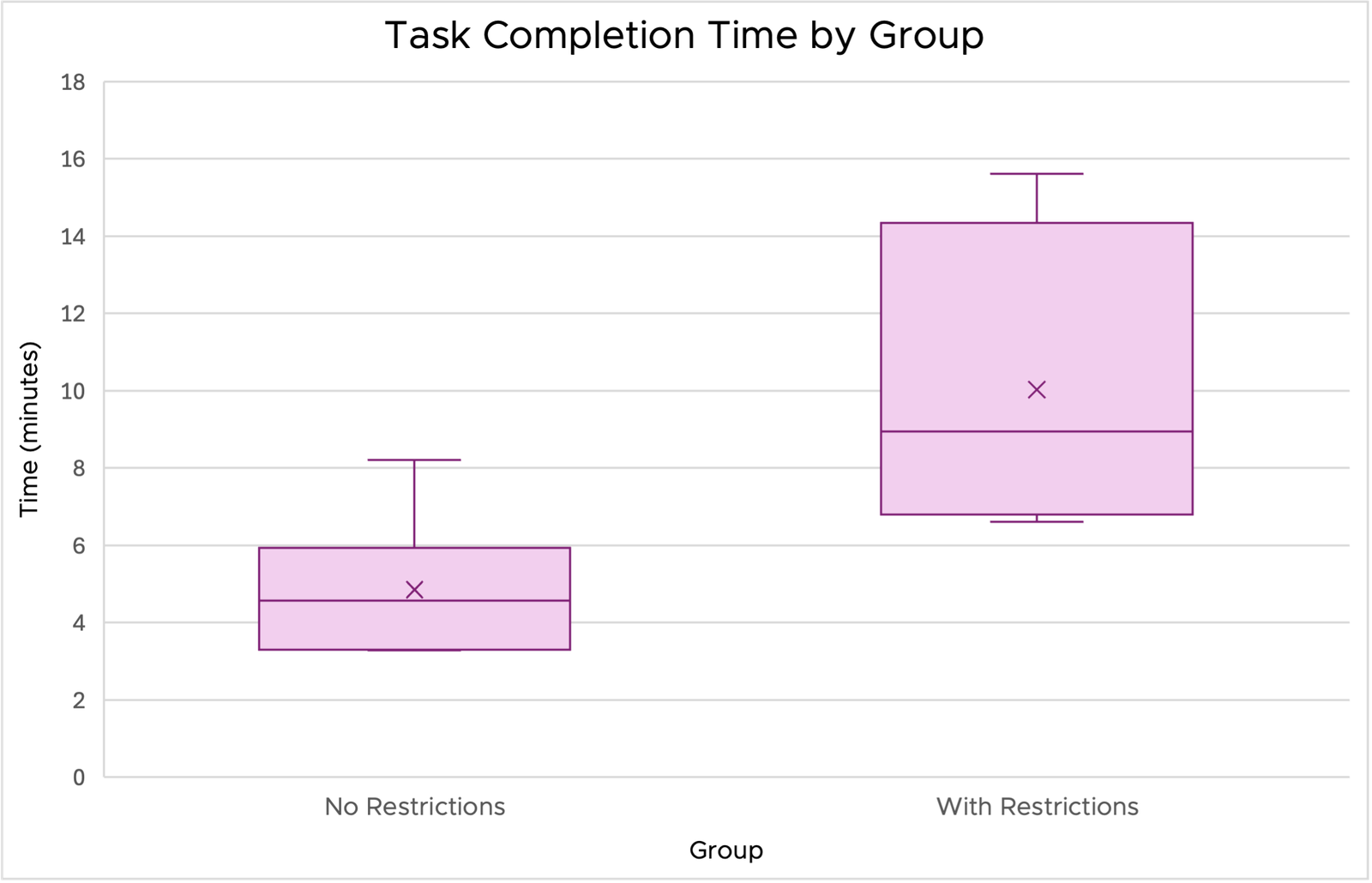
I collected the data from each participant and split them into two groups: those who did not have dietary restrictions, and those who had dietary restrictions.
The T-Test showed that those who had dietary restrictions took a significantly longer time completing the tasks, also shown by the box plot (t=0.02).
This suggests that we had to make the design more accessible.
Design Amendments
One of the primary goals of this design was to ensure that those with dietary restrictions are catered for. As the user testing indicated that those with restrictions had more difficulty completing the tasks, I made a key design change.
Previously, nutritional information was only displayed after clicking on the information icon. However, numerous participants noted that this icon was very small and easily missed.
Now, the nutritional information can be accessed in two ways – through the information icon, or by clicking on the photo of the meal.

I completed the user testing again with the updated design and found that there were no significant differences between the time taken to complete the tasks between either group.
Moreover, with the updated design, tasks were completed in significantly less time (t=0.16).
Thank You
